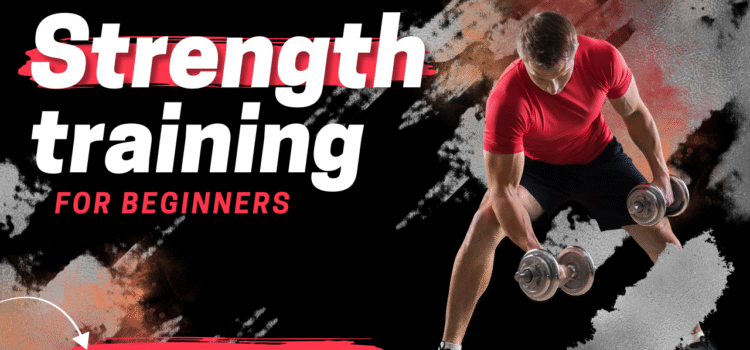
Tips for Managing Frizzy and Dry Hair: Expert Solutions for Softer Locks
Strength training isn’t just for bodybuilders or athletes—it’s for everyone. Whether your goal is to lose weight, build muscle, or simply improve your overall health, strength training is a must. But for beginners, it can be overwhelming to know where to start. With the right knowledge, tools, and mindset, anyone can begin a simple weight lifting plan that will yield powerful results.
In this guide, we’ll break down everything you need to know about getting started with strength training. From understanding the benefits of resistance training to mastering your first workout, you’ll find clear steps to build strength safely and effectively.
Why Strength Training is Important for Beginners
Strength training offers a range of health benefits, particularly for those new to fitness. Research from the American Council on Exercise highlights how resistance training increases muscle mass, boosts metabolism, improves bone density, and enhances overall fitness. The U.S. Centers for Disease Control and Prevention (CDC) also recommends strength training at least twice a week for adults to improve health and reduce the risk of chronic conditions.
Not only does it help you look stronger and feel more confident, but it also plays a crucial role in weight loss. According to the National Institute on Aging, lifting weights increases your resting metabolic rate, which means your body burns more calories even when you’re not working out.
The Basics of Strength Training for Beginners
Before you begin, it’s essential to understand what strength training is. Simply put, strength training (or resistance training) is the use of weights, machines, or bodyweight exercises to work muscles and improve strength. For beginners, focusing on compound movements, such as squats, deadlifts, and push-ups, is an excellent way to target multiple muscle groups at once.
Step-by-Step Beginner Strength Training Routine
1. Warm Up (5-10 Minutes)
Always start with a warm-up to prepare your muscles and joints for the workout ahead. This will help prevent injury and enhance performance. Some excellent warm-up options include:
- Light cardio: Jogging, brisk walking, or cycling.
- Dynamic stretching: Leg swings, arm circles, or walking lunges.
2. Start with Bodyweight Exercises
If you’re new to strength training, begin with exercises that use your body weight. This allows you to focus on form without worrying about heavy weights. A simple beginner strength training routine might include:
- Squats (3 sets of 10-12 reps): Great for the legs and glutes.
- Push-ups (3 sets of 8-12 reps): Targets the chest, shoulders, and triceps.
- Planks (3 sets of 20-30 seconds): Builds core strength.
These exercises will help you get comfortable with basic movements and set a solid foundation for using weights in the future.
3. Incorporate Dumbbells or Resistance Bands
Once you’re familiar with bodyweight exercises, you can gradually start using resistance tools like dumbbells or resistance bands. These tools allow for greater variation and challenge. For example:
- Dumbbell lunges (3 sets of 10 reps per leg): Targets the legs and glutes.
- Dumbbell rows (3 sets of 10 reps): Works the back and arms.
- Resistance band chest press (3 sets of 10-12 reps): Strengthens the chest and shoulders.
Start with light weights to avoid injury and focus on proper form.
4. Cool Down and Stretch
After completing your strength training routine, take time to cool down with static stretching to improve flexibility and muscle recovery. Focus on major muscle groups like your hamstrings, quads, back, and shoulders.
Tips for Success in Strength Training
- Focus on Form: Always prioritize proper form over lifting heavy weights. Incorrect form can lead to injury.
- Start Slow: If you’re new to strength training, begin with lighter weights or resistance bands, then gradually increase the load as your strength improves.
- Rest and Recover: Your muscles need time to recover after each workout. Aim for at least one rest day between strength training sessions to allow your muscles to repair and grow stronger.
- Stay Consistent: Like any workout plan, consistency is key. Aim to perform a strength training routine at least 2-3 times per week for optimal results.
Overcoming Challenges for Beginners
Getting started with strength training can be daunting, but there are ways to overcome common challenges:
- Lack of Confidence: Many beginners feel unsure about using weights at the gym. Consider starting with home workouts until you feel comfortable enough to try gym equipment.
- Time Constraints: Strength training doesn’t require hours in the gym. A simple weight lifting plan for beginners can be completed in 30-45 minutes.
- Plateaus: If progress seems slow, consider varying your routine to include new exercises or increase the intensity. Progressive overload (gradually increasing weight or reps) is key to continued progress.
Real-World Example: Sarah’s Journey to Strength
Sarah, a 28-year-old office worker from California, decided to start strength training after seeing the benefits her friends were experiencing. She started with bodyweight squats, push-ups, and planks at home, and after three weeks, she felt confident enough to incorporate dumbbells into her routine. Within two months, Sarah was not only stronger but also noticed weight loss and increased energy levels.
Strength Training for Weight Loss
For those specifically looking to lose weight, beginner strength training can complement your cardio routine and accelerate fat loss. While cardio is excellent for burning calories, strength training helps build lean muscle mass, which in turn boosts metabolism and aids fat loss. Combining strength training and cardio will give you the best of both worlds, improving both strength and weight loss.
Ready to Begin Your Strength Training Journey?
Strength training for beginners is not only accessible but also incredibly rewarding. By following a basic strength training routine, using simple resistance tools, and staying consistent, you’ll build strength, improve your health, and potentially lose weight. Start with bodyweight exercises and gradually incorporate weights or resistance bands as you build confidence and strength.












